Having many leads might not necessarily give you a high number of conversions. One way to tackle this challenge is using lead nurturing. By practicing this approach, you can develop a relationship with prospective customers and prevent leads from dropping out. But how does the lead nurturing process work?
Through this B2B marketing strategy, actionable content is sent to leads with subtle CTAs to engage with your brand. You aren’t actively selling them anything, but building credibility and gaining mind space. So when they are ready to make a buying decision, there’s a high chance of them considering you. As a sales or marketing professional in the building and construction industry, you should know that lead nurturing is the need of the hour. Let’s find out more about B2B lead nurturing and how you can use it to maximize your conversions.
How Lead Nurturing Helps Your Business
Improves Your Visibility And Credibility
Lead generation is a continuous process that requires patience. While knowing the majority of your leads might not buy anything from you in the short to medium term, you still need to stay in touch with them. Some of the leads might read your content and also appreciate you for not constantly selling them something. This is how they start trusting you and a relationship is built. A lead that sees you as a credible source is likely to become your client.
Maximizes Your Chances of Being a Thought Leader
The content you share with your prospective B2B clients should be relevant and useful. The more personalized the content, the better. By maintaining consistency in the amount and quality of content you send, you can become a reliable source of information for them. Your opinions and suggestions are valued, especially when it comes to making decisions. When a lot of your leads see you from this perspective, you start becoming a thought leader in the industry and that’s a great position to be leveraged.
Reduces Your Customer Acquisition Cost
The cost of retaining an existing customer is a lot less than acquiring a new one. By design, lead nurturing helps in reducing your customer acquisition costs by improving conversions, increasing customer loyalty and retention, and targeting your marketing efforts more effectively.
Boosts Your Sales
The primary benefit of lead nurturing is it increases your conversion rate. Research has shown proper lead nurturing can generate 50% more sales-ready leads, which is just one of the many reasons that make lead nurturing a profitable way of marketing. Your business needs an effective lead nurturing strategy to boost revenue and accelerate your brand’s growth.
Steps for Building an Effective B2B Lead Nurturing Strategy
Set the Foundation By Getting High-Quality Leads
Lead nurturing is a time and resource-intensive process. That’s why it is prudent to invest your efforts into leads who are likely to convert. But what strategies would you use to generate leads for a B2B business? Some of the most effective ways are posting quality content on your website and social media, leveraging SEO, and sending newsletters. A few other B2B lead generation efforts include pay-per-click advertising, getting featured on guest blogs, and even offline events.
Profile Your Leads
You should study your leads based on information like their job profile, location, and the name of their company. For instance, if you are a construction brand, your leads could be architects, engineers, electricians, and contractors. Profiling helps you understand your leads and their requirements better. It also helps you assess their buying intent. So you can build accurate buyer personas and use them to create personalized content that’s effective in converting leads.
Score Your Leads
Once you have enough information about your potential buyer, monitor their actions and assign them a score. You should take into consideration their position in the sales funnel and the buying journey. Rely on this data to strategize how you’ll be communicating with each of your leads. For example, the B2B leads who are in touch with your sales team for discussing the cost of redecorating their condos will rank higher than the leads who have downloaded your brand’s brochure or are in the awareness stage.
Plan It Out
After you profile your leads and assign them a score, you need to create a well-thought-out communication strategy. The leads you target will not just have different personas, but they will also be at different stages in the sales funnel. Their requirements and the kind of content they value might also differ. Your strategy has to accommodate all of this.
Put Your Efforts to Test
You need to evaluate the effectiveness of your lead-nurturing emails, landing pages, offers, and more. Two of the most common ways to gauge that are multivariate testing and A/B testing. Perform these on a selection of your leads and study the results before you reach out to all your leads.
Marketing and Sales Teams Must Cooperate For Effective Communication
As marketers, you should listen to sales calls to ensure everyone is on the same page. This will not only help improve the quality of your communication efforts but also help discover gaps and issues that might be hampering your sales.
(CTA – “Download this checklist and use it while deciding the lead nurturing strategies of your brand.”)
B2B Lead Nurturing Techniques to Increase Conversion Rates
Make Use of Email Automation Tools
Email continues to be a powerful tool for sales and marketing teams. You should supercharge the capabilities of email marketing with automation tools and use them to stay in contact with your leads. Automatically generated emails can respond to your leads as soon as they engage with you, so you never have to worry about delays again. The actions could be filling out a lead generation form, signing up for newsletters, requesting a demo, and more.
Share Content On Multiple Communication Channels
There will always be a possibility that your target audience misses your email, but you can reach them on other platforms such as LinkedIn and Facebook. Online marketplaces are good options too, as you can go into the specifications related to your construction and building services. You should use all relevant channels of communication to ensure maximum visibility.
Tap Into the Power of Interactive Content
Many brands are vying for your leads’ attention. Even if your team writes great copy, that might not always be enough to stand out. Content today has to be eye-catching. Remember, you are not just competing with other brands, but with every single email your target audience receives. Using interactive content like videos, GIFs, and quizzes is extremely effective in grabbing the attention of your audience and keeping them engaged.
Smart Use of Gated Content
Gated content is great for generating leads. People who are truly interested in your business and your content will put in the effort to register and become your lead. At the same time, overuse of gated content can annoy your potential buyers. A good practice would be to let people easily access the majority of your content and just keep some of your most valuable content gated.
Re-Evaluate Your Lead Nurturing Practices Regularly
Your leads are only human and their needs will change from time to time. You should analyze your strategies and their outcomes to ensure your messaging and content are up-to-date and relevant to your leads. Constant evaluation and swift iteration will help you optimize your strategies, stay competitive in your industry, and achieve better results over time.
Lead Nurturing Mistakes to Avoid
Delayed Responses
If you do not respond to a lead within five minutes after they’ve contacted you, the chances of converting them start to fall. This could be a major problem, but it has a simple solution. Setting up auto-generated emails is one of the best ways to ensure none of your leads feel unattended.
Letting the Automated Processes Take Over
Nurturing your leads with automated emails is necessary to usher them through the sales funnel stages, but the sales team has to take over at the right time. Otherwise, the leads will keep receiving emails and the lack of human interaction will frustrate them. They will eventually lose interest in your brand and you’ll lose a sale. To figure out when exactly the sales team should step in, it’s important to regularly monitor the lead’s level of engagement with the brand.
Lack of Research
The success of your lead nurturing efforts depends upon how well you understand your audience, who they are, what motivates them, and what problem you can solve for them. A top-notch pitch for selling timber doors won’t work on a lead whose biggest requirement is floor tiles. Blunders like these happen when you don’t pay attention to your leads or fail to understand their pain points. In-depth research gives direction to your efforts and helps create content that’s relevant to your clients.
Using Mediocre Content
We aren’t just talking about your email or social media posts. The content you use across all your communication channels has to be well crafted. Create content that’s engaging, informative, relevant, and beneficial. These can include articles like how to paint kitchen cabinets, use of solar energy at home, and five signs it’s time to remodel your house. But stay away from using generic content as it won’t keep your audience interested and will show a lack of dedication on your part.
Failing to Stay in Touch
Your follow-up game has to be at its best with those businesses that have shown interest in your brand. Even if they don’t buy anything now, there’s a chance that they will someday. Sharing quality content with your existing customers is a good way of showing that you value them. So when it’s time for them to buy again, you will be on their mind.
(CTA – “Let’s design your lead nurturing plan that delivers. Book a consultation with Nimble Thinkers right away.”)
Final Thoughts
We live in a world where one can find plenty of options for anything in a matter of minutes. That’s exactly why lead nurturing is not just a useful practice, but a necessity. Along with being effective in maximizing conversions, it also increases brand awareness and helps build long-lasting relationships with clients. As a sales or marketing professional, add lead nurturing to your strategies and watch your conversion rates take off.
FAQs
Why is lead nurturing important?
Lead nurturing greatly increases the chances of conversion and it functions by providing valuable content to the leads. By maintaining consistency in their communication, brands start to gain trust. Even though they may not buy anything soon, the lead will consider the brand whenever it is time to make a purchase. Lead nurturing also helps to retain existing customers and lower customer acquisition costs.
How do you build a strong B2B relationship?
Here are some of the ways you can cultivate a strong relationship with your B2B customers:
- Understand their needs, goals, and pain points and focus on delivering solutions. They should believe your brand has what it takes to fulfill their requirements.
- Try to be available when they need you and also use the means of communication that they prefer.
- Make them feel special by personalizing your products, services, and communications as per their needs.
What is B2B demand generation and how is it different from lead generation?
B2B demand generation and lead generation are different concepts of marketing and should ideally be used together for maximum effectiveness. The goal of demand generation is to create as much interest about the brand as possible. Lead generation is where this interest is capitalized and transformed into paying customers.
How can B2B improve customer loyalty?
There are many ways of improving B2B customer loyalty. Here are some examples:
- Selling your products and services constantly annoys your customers. Instead, stay in touch by sending informative content that is truly helpful.
- Accept honest negative feedback as it shows you respect others’ opinions and are willing to work toward being better.
- Arranging events like conferences, retreats, and meetups are very effective in increasing customer loyalty.
External Links and References:
Interested in learning more about B2B lead nurturing strategies? We recommend checking out some of these additional resources:
B2b Lead Nurturing Essentials | Digital Litmus
B2B Lead Nurturing Guide: Best Practices to Turn Leads into Customers | Cience
6 Marketing Automation Examples For Nurturing Leads | Zapier
8 Steps To Building Better Relationships With B2B Clients | quoter
5 Simple Steps to Strong B2B Client Relationships | Pro Motion






